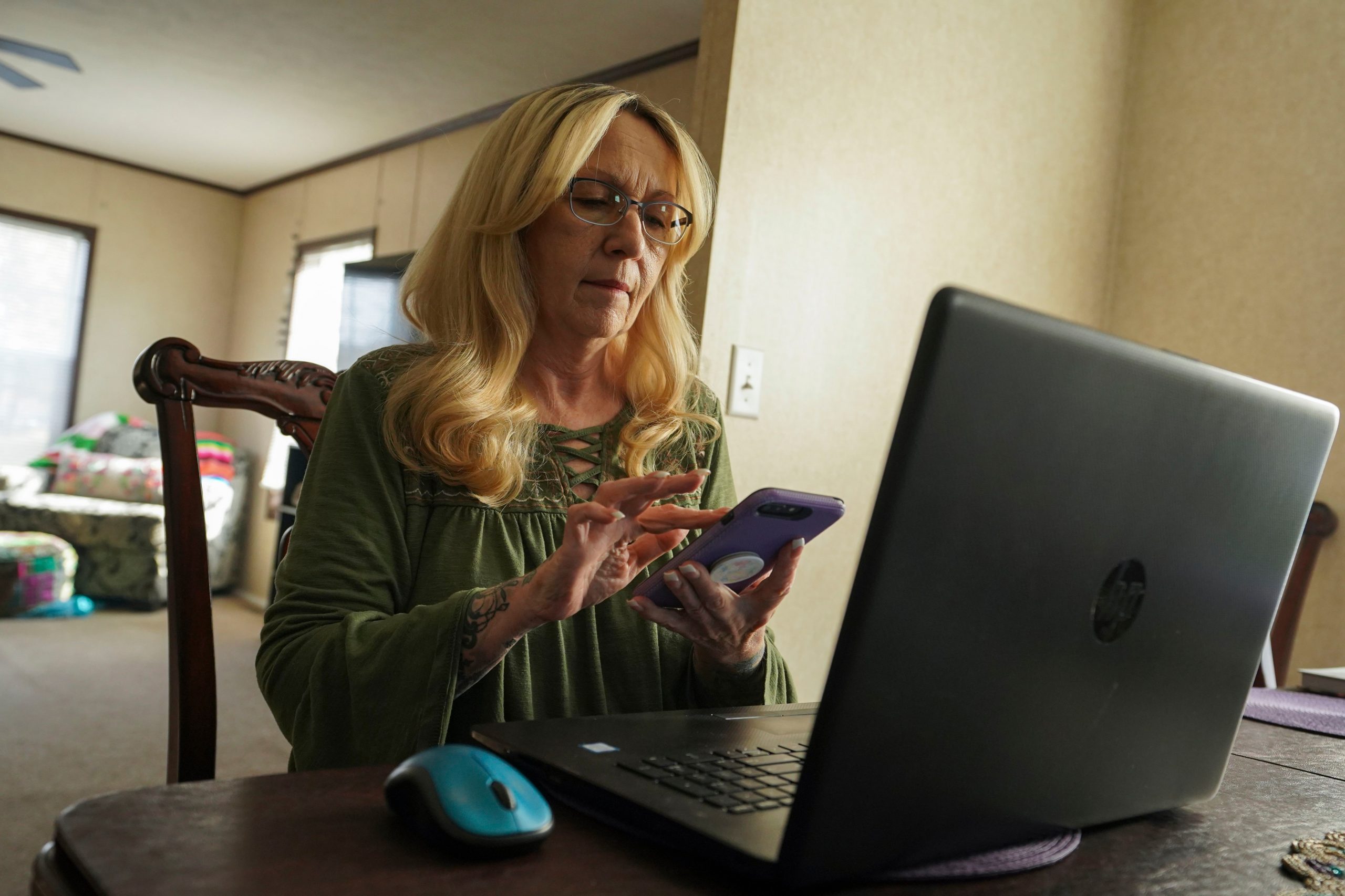
Lack Of Telehealth Law In Pennsylvania A Major Headache For Patients Who Need It Most


Danielle Ohl of Spotlight PA
Spotlight PA is an independent, nonpartisan newsroom powered by The Philadelphia Inquirer in partnership with PennLive/The Patriot-News, TribLIVE/Pittsburgh Tribune-Review, and WITF Public Media. Sign up for our free newsletters.
HARRISBURG — Cheryl Gibson was in pain as she drove.
Eight months earlier, Gibson had begun an at-home breathing treatment for her emphysema when the mild headache she’d felt at the base of her skull exploded into debilitating pain. Her arm went numb, causing her to drop the nebulizer tube she’d been holding.
Gibson was sure she had suffered a stroke, but months of subsequent tests and scans have failed to identify the cause of the unpredictable pain she now experiences multiple times a week.
FREE NEWSLETTER
Sign up for a free roundup of the top news from across Pennsylvania, all in one daily or weekly email from Spotlight PA.
Without a way to know when an attack is coming, and with preexisting conditions that limit her mobility and increase her risk of getting seriously sick from COVID-19, Gibson relies on telehealth appointments to see her neurologist and other doctors.
But when she was referred to a pain management specialist, the office told her she’d have to come in person. Gibson drove 45 minutes one way from her home in Schuylkill Haven to the office in Tamaqua while monitoring a dull headache she hoped wouldn’t grow worse.
Her appointment that day lasted five minutes and did not include a physical evaluation.
“I’m not a big baby about stuff,” Gibson said. “But this is debilitating. I can’t function, I can’t do anything, and I can’t get behind the wheel of a car and drive because I don’t feel safe.”
The number of Pennsylvanians who have come to rely on phone and video appointments surged after the pandemic made in-person visits potentially dangerous. And many health-care providers and insurance companies quickly embraced telehealth as a necessary way of getting patients needed care.
But the state is one of only seven that does not have any law requiring private insurers to reimburse for telehealth, resulting in a patchwork system of care. Access to telehealth depends on someone’s insurance company or their specific insurance plan. Even if a patient has coverage, in some cases medical providers don’t provide telehealth because they have to determine eligibility for each of their patients, an onerous process resulting in uneven care.
All of that leaves Pennsylvania patients — especially those who need remote care the most, such as people in rural areas — confused, frustrated, and, at times, without services they need.
“Pennsylvania is definitely a little bit of an anomaly in that,” said Kathy Hsu Wibberly, director of the Mid-Atlantic Telehealth Resource Center. “And strangely enough, there are so many states that have moved to creating laws and Pennsylvania has struggled.”
For the last five years, Sen. Elder Vogel (R., Beaver) has been trying to pass legislation that would allow the state to oversee health providers practicing remote medicine and explicitly require insurers to reimburse for it. But each year, the measure has failed.
In 2016, it never came out of committee. In 2018, it passed the Senate but died in the House. Last year, the bill passed both chambers, but Gov. Tom Wolf vetoed it after Rep. Kathy Rapp (R., Warren), who chairs the House Health Committee, amended it to prohibit providers from prescribing abortion-inducing medicine via telehealth.
Because there is no law mandating telemedicine in Pennsylvania, there’s nothing barring providers from practicing it, but insurers are not required to cover it. In other states, laws provide parity between in-person and remote health-care services.
Instead, insurance companies decide what kinds of telehealth appointments are covered based on their own policies and the agreements they may work out with health-care networks or individual doctors.
The process can be onerous for health-care providers that aren’t part of a broader network, Wibberly said, because each patient’s coverage may be different.
“What happens now in Pennsylvania is a patient will call the office and ask if they can have a telehealth visit and a provider will say no because they don’t want to have to go through all the checks on this particular insurer, and sometimes it’s not even the insurer, it’s plan by plan.”
This can result in providers declining telehealth services even when a patient’s insurance covers them. Gibson, who receives coverage through a private insurer under the Medicare program, recently called the company to set up a telehealth appointment after she felt a cold coming on.
“Being that I have the beginning of COPD, I need to nip that as soon as it happens,” she said.
The first doctor she connected with over the phone refused to treat her.
“They told me they can’t talk to me about anything like that, that’s not what telehealth is for,” she said.
A second doctor wouldn’t prescribe her medicine over the phone.
The next day, a call with a third doctor finally resulted in a prescription.


